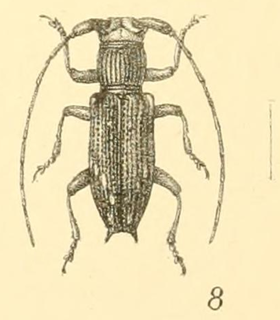Related Research Articles

In mathematical analysis, the maxima and minima of a function, known collectively as extrema, are the largest and smallest value of the function, either within a given range, or on the entire domain. Pierre de Fermat was one of the first mathematicians to propose a general technique, adequality, for finding the maxima and minima of functions.

Solar minimum is the period of least solar activity in the 11-year solar cycle of the Sun. During this time, sunspot and solar flare activity diminishes, and often does not occur for days at a time. The date of the minimum is described by a smoothed average over 12 months of sunspot activity, so identifying the date of the solar minimum usually can only happen 6 months after the minimum takes place.

Instrument meteorological conditions (IMC) is an aviation flight category that describes weather conditions that require pilots to fly primarily by reference to instruments, and therefore under instrument flight rules (IFR), rather than by outside visual references under visual flight rules (VFR). Typically, this means flying in cloudy or bad weather. Pilots sometimes train to fly in these conditions with the aid of products like Foggles, which are specialized glasses that restrict outside vision, forcing the student to rely on instrument indications only.

Minima Moralia: Reflections from Damaged Life is a 1951 book by the philosopher Theodor W. Adorno and a seminal text in critical theory. Adorno started writing it during World War II, in 1944, while he lived as an exile in America, and completed it in 1949. It was originally written for the fiftieth birthday of his friend and collaborator Max Horkheimer, who had co-authored the earlier book Dialectic of Enlightenment with Adorno.

Sistema Ox Bel Ha is a cave system in Quintana Roo, Mexico. It is the longest explored underwater cave in the world and ranks fourth including dry caves. As of May 2017 the surveyed length is 270.2 kilometers (167.9 mi) of underwater passages. There are more than 140 cenotes in the system.
Minima, Burkina Faso is a village in the Zimtenga Department of Bam Province in northern-central Burkina Faso. It has a population of 829.

Maria da Fé is a Brazilian municipality located in the state of Minas Gerais. Its population as of 2020 is estimated to be 14,056 people. The area of the municipality is 203.774 km². The city belongs to the mesoregion South/South-West of Minas Gerais and to the microregion of Itajubá.

Salvinia minima is a species of aquatic, floating fern that grows on the surface of still waterways. It is usually referred to as common salvinia or water spangles. Salvinia minima is native to South America, Mesoamerica, and the West Indies and was introduced to the United States in the 1920s-1930s. It is classified as an invasive species internationally and can be detrimental to native habitats. This species is similar to but should not be confused with giant salvinia, Salvinia molesta.
Minima naturalia were theorized by Aristotle as the smallest parts into which a homogeneous natural substance could be divided and still retain its essential character. In this context, "nature" means formal nature. Thus, "natural minimum" may be taken to mean "formal minimum": the minimum amount of matter necessary to instantiate a certain form.

Clovelly is a suburb in the Cape Peninsula area of Cape Town in South Africa.

Stathmodera is a genus of beetles in the family Cerambycidae, containing the following species:
Stathmodera aethiopica is a species of beetle in the family Cerambycidae. It was described by Breuning in 1940.
Stathmodera flavescens is a species of beetle in the family Cerambycidae. It was described by Breuning in 1940.
Stathmodera vittata is a species of beetle in the family Cerambycidae. It was described by Breuning in 1940.
Stathmodera unicolor is a species of beetle in the family Cerambycidae. It was described by Breuning in 1960.
Stathmodera grisea is a species of beetle in the family Cerambycidae. It was described by Breuning in 1939.

Stathmodera lineata is a species of beetle in the family Cerambycidae. It was described by Gahan in 1890. It is known from Sierra Leone.
Stathmodera pusilla is a species of beetle in the family Cerambycidae. It was described by Per Olof Christopher Aurivillius in 1907.
Stathmodera wagneri is a species of beetle in the family Cerambycidae. It was described by Adlbauer in 2006. It is known from Kenya.
Nepenthes minima is a tropical pitcher plant native to Central Sulawesi, Indonesia. It grows in seasonally dry grasslands at elevations of 1000–1700 m above sea level, and has a number of adaptations to survive wildfires. It is the only pyrophytic Nepenthes species known from outside Indochina and the Philippines.
References
- ↑ BioLib.cz - Stathmodera minima. Retrieved on 8 September 2014.